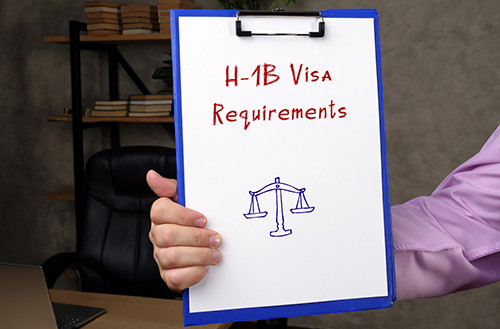-100.jpg?width=300&name=sbam%20logo%20(hubspot)-100.jpg)
By Anthony Kaylin, courtesy SBAM Approved Partner ASE
In a time when labor hoarding is occurring in some sectors, yet in others, layoffs are happening, employers with H-1Bs need to follow a process or it could be a costly mistake in which an H-1B is not found to be properly terminated.
The process that the employer must follow to show a “bona fide” termination of H-1B employees includes:
- Notice to the H-1B employee,
- Notice to United States Citizenship and Immigration Services (“USCIS”) that the H-1B employment has been terminated, and
- Payment to the H-1B employee of reasonable costs of return transportation abroad. Employers should maintain a clear record of each element met.
An H-1B employee cannot be temporarily laid off. Any employer that tries this approach could run afoul of legal trouble. Although the USCIS do not have a formal process for this process, the U.S. Department of Labor may remedy the employee with back wages and other appropriate remedies.
- Notice to an H-1B employee
The notice to the H-1B employee should include the reason for termination and notice of the employer’s obligation to notify USCIS of the termination and of the eventual revocation of the employee’s H-1B petition that will result. If an H-1B is laid off, the regulations governing H-1Bs provide for a grace period of up to 60 days for certain H-1B workers. In this situation, as long as they have more than 60 days remaining on their I-94/H-1B approval period, and other requirements are met, they will have time to either look for another job or prepare to move back to their home countries. The 60-day grace period is not set in stone, as USCIS has the authority to reduce the period at their discretion.
- Notice to USCIS
An H-1B employer is required to notify USCIS “immediately” of “any material changes in the terms and conditions of employment” affecting an H-1B employee. As such, the employer should send notice to the USCIS office that approved the petition of the reasons and timing of the termination. Due to a number of issues though, USCIS is supposed to send back a letter once in receipt of the employer’s notice that the H-1B status has been revoked. However, this letter has been delayed for up to a year or more in some cases. Therefore, employers and employees may not have knowledge of when USCIS has revoked the H-1B status.
- Employer’s Payment for Reasonable Transportation Costs
Once an employer terminates the H-1B employee, the employer is required to pay for all reasonable costs of transportation for the H-1B employee, but not the family, back to the H-1B employee’s last place of foreign residence. The employer should put this in writing in the notice to the H-1B employee. Failure to do so could result in litigation by the U.S. Department of Labor. It could also result in an omalous situation of having to pay the wages of the H-1B employee when they are not working for the employer anymore. If the H-1B employee clearly identifies that they will not be leaving the country, it could alleviate the requirement of payment for the reasonable costs, but it has to be clear by the H-1B employee. If litigation results, the employer could again be responsible for the H-1B employee’s wages.
The employer should make all representation that they will pay for the reasonable costs, even if the H-1B employee is finding a new job. If an H-1B employee finds a new job and the H-1B is approved for the new job, the employer is waived liability of the payment of reasonable costs. However, it may not relieve the employer of the H-1B employee’s wages during the period (sometimes several months) that the second employer’s H-1B petition was pending if notice was not provided to the employee.
Final Thoughts
It is important when benching, terminating an H-1B employee, or even going through the discipline process of an H-1B employee, that HR works with legal counsel. First, the regulations do not allow benching an H-1B employee, by underpaying or not paying an employee while on the bench. These employees must receive their normal wages. Second, in a disciplinary process, the employee should never be suspended without pay because it could violate the regulations. Third, recalling a laid off H-1B employee whose H-1B may not have been revoked could also be problematic as the US DOL may require the payment of wages while the employee was on “recall” status. Talk through all scenarios with legal counsel before taking action with an H-1B employee.
Image courtesy of SBAM













